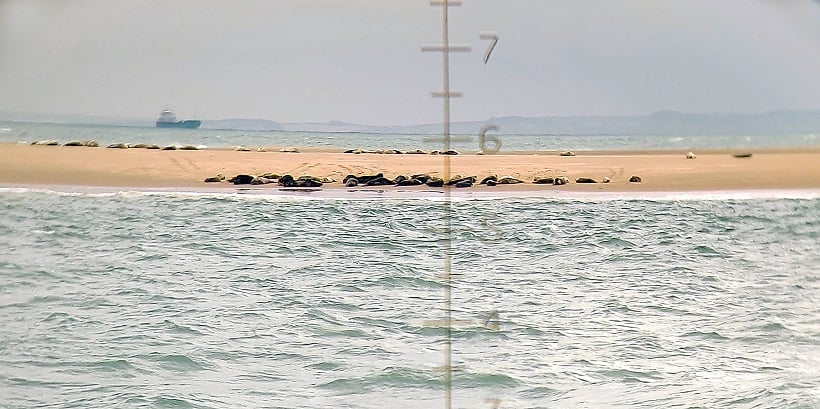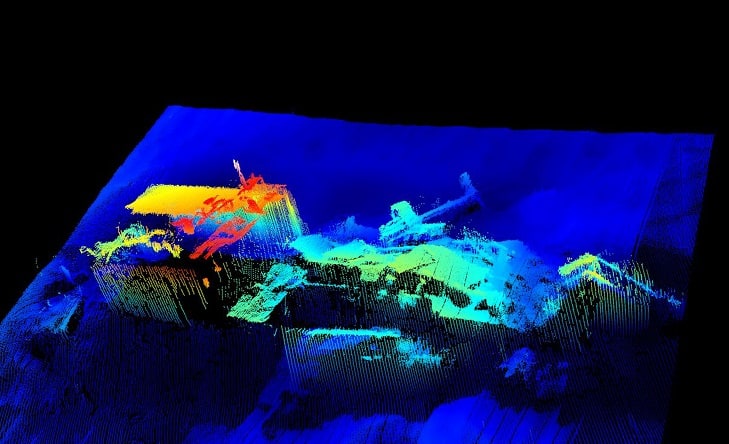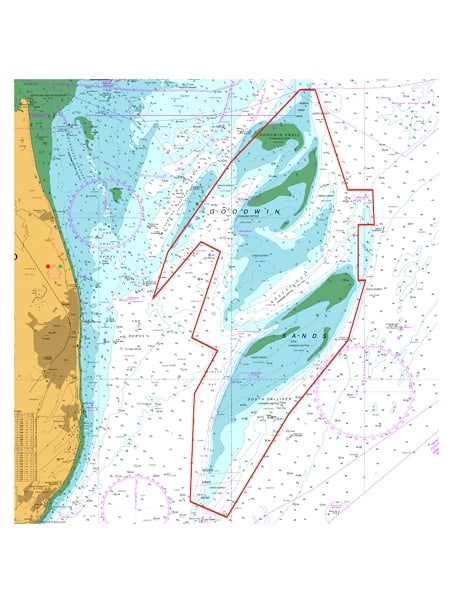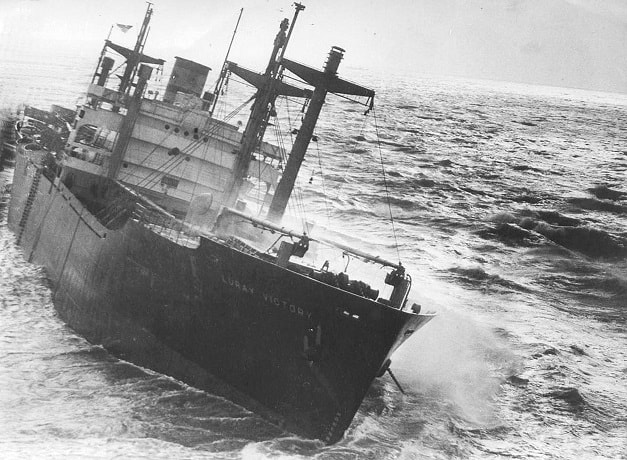
For centuries the Goodwin Sands have posed a navigational threat to mariners, largely because they were completely unmarked and uncharted. Strong currents and tides constantly shift the sand around, changing the edges of the sandbank. An out of date chart can make all the difference between a safe passage and running aground.
Different areas of the Goodwins are now surveyed on a regular basis and this past month has seen a routine resurvey of the whole area being undertaken for the Maritime & Coastguard Agency (MCA) as part of their Civil Hydrography Programme – this full survey is carried out every 12 years. The detailed high resolution multibeam echosounder maps the shifting seabed and identifies potential navigational hazards such as obstacles, as required by the International Convention for the Safety of Life at Sea (SOLAS).
The survey is being carried out by contractors A-2-Sea Solutions Ltd from Romsey using their state of the art 20m survey vessel FPV Morven. Morven can accommodate up to six marine and survey crew – sadly, not enough to continue the Royal Navy Hydrographers’ tradition of playing cricket on the Sands!

Data collected by the multibeam echosounder is processed on board and sent to both the MCA and the UK Hydrographic Office (UKHO). Following completion of validating and analysis, the data will then be incorporated into a new edition of the Admiralty chart number 1828, likely to be published in early 2022.
The survey team also recorded seal sightings – locations and numbers – thereby identifying the current haul out sites.
As well as updating the Admiralty chart, the data collected will be used to produce a report comparing the changes in water depths since the last full survey in 1997. Significant discoveries are sent straight to the Hydrographic Office who will in turn issue a Notice to Mariners with immediate effect.

Paula English, the MCA’s Hydrography Programme Lead said the work was a vital part of keeping those at sea safe. “The areas of highest navigational safety risk within UK Waters have to be and are surveyed systematically,” she explained. “The lives of mariners can and do depend on it.

“The CHP and the MCA work together in close partnership with the UK Hydrographic Office to make sure our nation’s nautical charts and publications are current, accurate and fit for purpose. It means that mariners can make informed and safe decisions about their choice of vessel route to make sure they avoid potential hazards, protecting themselves, their crew, shipping and marine environment.”

